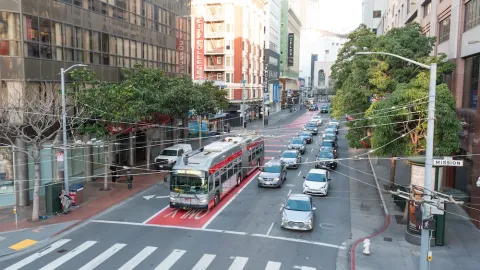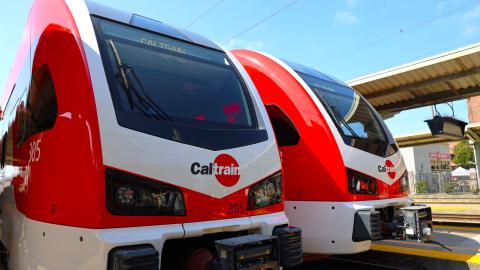
The collapse earlier this month of a pedestrian bridge at Florida International University (FIU) was shocking and upsetting for many reasons: six people lost their lives, the bridge had been intended to increase pedestrian safety, and there's a possibility that warning signs went unheeded.
But beyond the tragedy and fall-out, it also raises several questions: Why? What makes a bridge collapse? And what are conditions like for our bridges here in the Bay Area?
This blog post from the Institute of Public Works Engineering Australasia – Why do bridges fail? – looks at some of the nitty-gritty research on bridge failure and provides guidance on how to interpret what the data says. According to the research, design and construction errors account for a very small proportion of failures, so in that respect the FIU collapse was unusual. The leading causes of bridge failure are much more generally related to hydraulics (flooding, flood-related debris, erosion), collisions, overloading or deterioration. Read the post for more detail.
Thankfully, here in the Bay Area, this is an area where we can take some measure of comfort. Although we certainly aren’t without our issues, the recent story on bridge conditions is an overwhelmingly positive one. As can be seen in the below excerpt and chart from Vital Signs, the region’s performance monitoring initiative, Bay Area bridge conditions over the past decade-plus have improved dramatically thanks to significant investments:
Bay Area bridges and overpasses are in their best shape since 1992 – the earliest year on record – thanks to substantial efforts to improve the seismic and structural safety of these critical facilities. Poor bridge conditions hit a peak in 2004 when nearly one-third of the Bay Area’s bridges were identified as structurally deficient. Over the past 12 years, seismic retrofit programs on highway bridges as well as upgrades to elevated freeway structures helped the region reverse that trajectory. As a result, the share of bridges flagged as deficient fell by a remarkable 25 percentage points – and stood at just 7 percent as of 2016.
Historical Trend for Bridge Condition - Bay Area
Compared to other large metro areas, the Bay Area has seen the biggest improvement in bridge conditions in the country, as seen below.
Overall, every metro area except for Miami has seen improvements in bridge condition since 2000. Having reduced its share of structurally deficient bridge deck area by 25 percentage points since 2005, the Bay Area finds itself in the middle of the pack of the nation’s top 10 metro areas for bridge condition. New York now claims the bottom rung for worst bridge condition, with structurally deficient bridge deck area shares of 11 percent. While the Bay Area had seen by far the largest gains, Los Angeles has also made notable progress over the last four years.
As noted above, there were several contributing factors and investments made over the last several years to facilitate this improvement, but perhaps the most noteworthy has been the Toll Bridge Seismic Retrofit program.
With a budget of approximately $9 billion, the program has helped all seven of the Bay Area’s state-owned toll bridges — plus two more in Southern California — achieve seismic safety. If you’ve ever wondered where your bridge tolls go, this is where: three dollars of the current $5 regular toll on the seven Bay Area bridges goes to service debt on the bonds issued to finance the retrofit program.
There is still more progress to be made, of course, particularly on the remaining structurally deficient, generally smaller bridges scattered across the region's nine counties. But for our big, high-volume bridges the proof is the pudding… consider it money well spent!
For the latest on the San Francisco Bay Area Toll Bridge Seismic Retrofit Program, see the 2017 Fourth Quarter Project Progress and Financial Update.



Submit your comment
In order to receive a reply to your comment, please provide an email address.